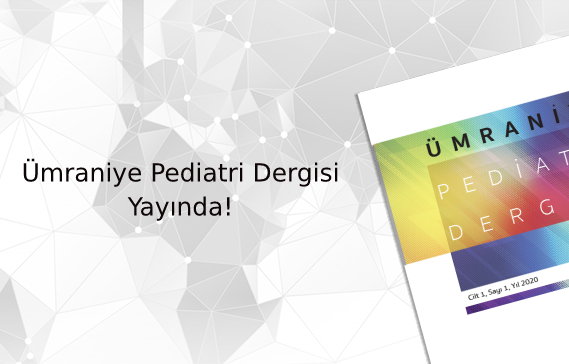2Koç Üniversitesi Hastanesi, Çocuk Sağlığı ve Hastalıkları Kliniği, İstanbul, Türkiye
3Koç Üniversitesi Tıp Fakültesi, Çocuk Sağlığı ve Hastalıkları Anabilim Dalı, Yenidoğan Kliniği, İstanbul, Türkiye
Özet
Amaç: Gebelik yaşına göre doğum ağırlığı, SGA bebeklerin beslenme durumunun adil bir şekilde değerlendirilmesini sağlar. Ponderal indeks, “wasting”i (yaşa göre boy oranı normalken kilo kaybı ve akut beslenme yetersizliği) tanımlamak için kullanılır. Bu çalışmada, term SGA bebeklerin PI değerleri ile kısa dönem komplikasyonlar arasındaki ilişkiyi ve PI’in güvenilirliğini değerlendirmeyi amaçladık.
Gereç ve Yöntemler: Bu retrospektif çalışmaya toplam 489 term SGA bebek dahil edildi. Grup 1, düşük PI (PI<10. persentil) (n=45) olan bebeklerden oluşurken, grup 2 ve 3, uygun PI (PI 10.-90. persentil) (n=405) ve yüksek PI (PI>90. persentil) (n=39) olan bebeklerden oluşmuştur. Anne ve yenidoğanların demografik ve klinik verileri toplanıp istatistiksel olarak karşılaştırılmıştır.
Bulgular: Düşük PI grubunda, hipoglisemi insidansı, tedavi gerektiren sarılık ve hastaneye yatış oranları grup 2 ve 3’e göre anlamlı olarak yüksekti; bunlar dışında gruplar arasında fark gözlenmedi (p=0,01, p=0,006 ve p=0,04, sırasıyla).
Tartışma: Düşük PI’li term SGA bebeklerde kısa dönem komplikasyonlar daha fazla görülmesine rağmen, tüm term SGA bebekler yüksek riskli yenidoğanlar olarak kabul edilmeli ve kısa dönem komplikasyonları önlemek için özellikli gözlem ve bakım yapılmalıdır.
2Department of Pediatrics, Koç University Hospital, İstanbul, Türkiye
3Division of Neonatology, Department of Pediatrics, Koç University Faculty of Medicine, İstanbul, Türkiye
Abstract
Objective: The birth weight (BW) for gestational age (GA) provides an accurate assessment of the nutritional status of small for gestational age (SGA) infants. The ponderal index (PI) is used to identify wasting. In this study, we aimed to evaluate the association between PI values and short-term complications of term SGA infants and assess the reliability of PI.
Material and Methods: A total of 489 term SGA infants were enrolled in this retrospective study. Group 1 comprised infants with low PI (PI<10th percentile) (n=45), while groups 2 and 3 consisted of infants with appropriate PI (PI 10th–90th percentile) (n=405) and high PI (PI>90th percentile) (n=39), respectively. Demographic and clinical data of the mothers and neonates were collected and compared statistically.
Results: No difference was observed between the groups, except for the incidence of hypoglycemia, jaundice requiring treatment, and hospitalization rate, which were all significantly higher in the low PI group compared to groups 2 and 3 (p=0.01, p=0.006, and p=0.04, respectively).
Conclusion: Although short-term complications were higher in term SGA infants with low PI, all term SGA infants should be defined as high-risk neonates and warrant special neonatal care and surveillance to prevent short-term complications.






 Seçil Erçin1
Seçil Erçin1 





